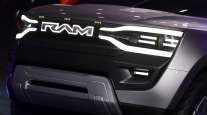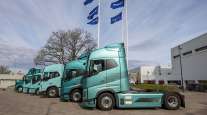Senior Reporter
Suppliers See Opportunities With Electric Trucks
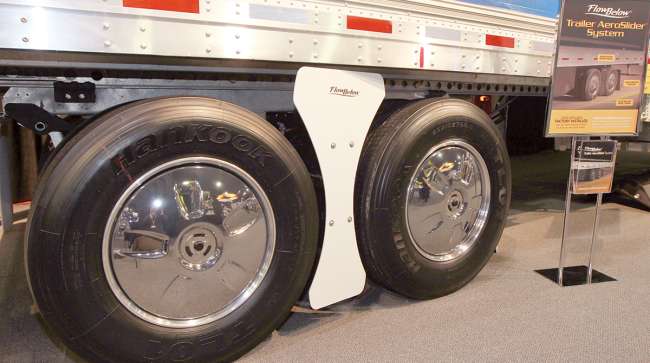
Developers of aerodynamic and other equipment that helps fleets curtail fuel use in diesel-powered trucks say they see similar opportunities with electrified vehicles.
“With an electric vehicle, you can extend your range by making the vehicle more efficient or adding more batteries. It is cheaper to streamline the truck than it is to add batteries to it,” Kyle Walker, FlowBelow Aero Inc. vice president of engineering, told Transport Topics.
FlowBelow makes wheel covers and tandem fairings for trucks that work together as a complete aerodynamic system.
“There will be pressure on us to reduce the weight over time using lighter materials,” Walker said. “Some, we are already looking at.”
Most prototype tractors from manufacturers planning to offer electrified Class 8 trucks have aerodynamic designs. One of them, the hydrogen-electric Nikola Two Class 8 model, is slated to begin limited production by 2021, followed by full production the next year. The company has said the truck will have an operating range of 500 to 1,000 miles.
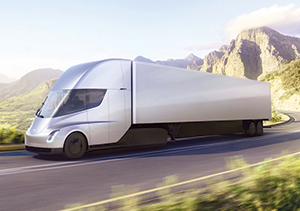
A rendering of the Tesla Semi. (FedEx)
Tesla expects to have its 500-mile-range Class 8 Semi for fleet testing in 2019, and the company has been previewing the truck by driving it to carriers that have placed orders for it.
These developments are arriving as diesel manufacturers continue working to improve the engines’ performance, noted Ken Vieth, general manager of ACT Research Co.
“Diesel power is under attack [through regulations] long-term for use in on-highway commercial vehicles,” he said. “Alternative power is being developed, tested and refined, while diesel engines are also undergoing transition to become more fuel efficient and clean.”
The California Air Resources Board stated recently that, beginning with model-year 2022 vehicles, heavy-duty engines will need to store data related to emissions of nitrogen oxide and fuel consumption. Regulators will use the data to “identify vehicles with excess smog-related and greenhouse gas emission,” CARB said in a press release.
No matter the powertrain, maintaining proper tire inflation helps reduce heating and flexing of a tire’s sidewall — the primary reason for a blowout — but automatic tire inflation system manufacturer Aperia Technologies Inc. believes electrification could place renewed emphasis on maximizing tire life and improving fleet safety.
“For certain range-limited customers, like regional fleets, there will also be a higher value for efficiency,” said Judith Monte, Aperia vice president of marketing. “They’ll take weight and cost out of the [batteries] in order to meet the fleet’s target mileage between charges.”
That will put higher value on other efficiency measures, such as improvements to aerodynamics and rolling resistance, she said. “It may drive OEMs to look to new ultra-low cRR [coefficient of rolling resistance] tires, which may be more sensitive to load or inflation pressure and have lower tread life.”
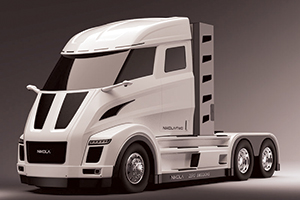
The Nikola Two zero-emissions truck. (Nikola Motor Co.)
Nathan Stahlman, chief operating officer of Instructional Technologies Inc., said his company already has built training modules for those interacting with electric vehicles.
“We are aware of some of the challenges with operation and maintenance of those vehicles,” he said.
For example, certain electric vehicles can’t go through truck washes because water penetrates the high-voltage parts of the vehicle, he said.
Other operational aspects are more subtle, he said.
“Where people are comfortable with how much noise a diesel makes, especially with pedestrians and other road users, an electric vehicle is quiet. That will mean different responsibilities for the drivers, such as more actively searching for those nonmotorized users in their space, especially in an urban environment.”
Dick Hyatt, CEO of Decisiv Inc., a provider of service-relationship management programs for fleets, said that as the number of electrified trucks on the road increases, many of the same issues confronting diesels — such as increased regulation — will emerge.
“It’s not just the powertrain. You still have wheels and all the other components around the vehicle that really have to be maintained. Those are the ones that are going to create problems. The regulatory requirements are also going to grow for keeping service records for all of that,” Hyatt said.


